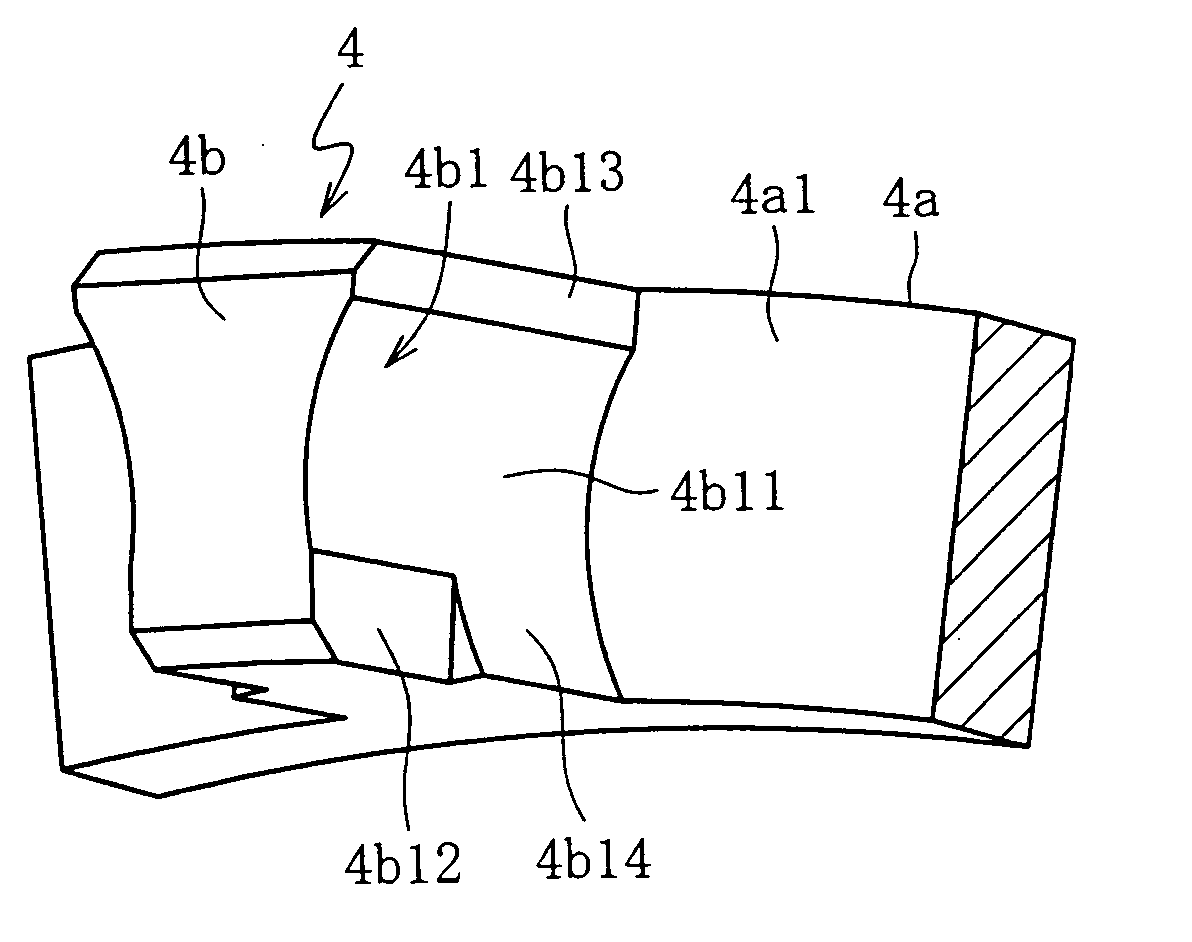Cylindrical roller bearing
a cylindrical roller bearing and roller bearing technology, applied in the direction of rolling contact bearings, shafts and bearings, rotary bearings, etc., can solve the problems of reducing the equalization capacity, difficult to obtain the level of non repeatable run-out (nrro) required for the main spindle of a machine tool, and abnormal abrasion of the cage, so as to reduce the number of non repeatable runs. , the effect of suppressing the increase in the bearing temperatur
- Summary
- Abstract
- Description
- Claims
- Application Information
AI Technical Summary
Benefits of technology
Problems solved by technology
Method used
Image
Examples
first embodiment
[0095]FIG. 1 shows a double row roller bearing according to a In the spindle device of a machine tool, this double row roller bearing is a device that supports the spindle, which is driven rotationally at high speed, in a freely rotatable manner relative to the housing. The roller bearing comprises an inner ring 1 having a double row of raceway surfaces 1a, an outer ring 2 having a double row of raceway surfaces 2a, a double row of cylindrical rollers 3 disposed between the raceway surfaces 1a of the inner ring 1 and the raceway surfaces 2a of the outer ring 2 in a freely rollable manner, and a pair of cages 4 made of a synthetic resin which support each of the cylindrical rollers 3. A central flange 1b is provided at the center, in the axial direction, of the inner ring 1, and outer flanges 1c are provided at both ends.
[0096] Chamfered sections 2b are formed at both outside ends in the axial direction of the raceway surfaces 2a of the outer ring 2, and relatively smaller chamfered...
seventh embodiment
[0139] As shown in FIG. 13, in this seventh embodiment, the cage 4 is a rolling element guided cage, which rotates during bearing rotation with the inner circumferential direction side faces 4b1 of the pillars 4b guided while in contact with the rolling contact surface of the cylindrical rollers 3. When the rotation of the bearing reaches a predetermined speed, and centrifugal force causes the pillars 4b to undergo outward elastic deformation, the base end inner circumferential sections (the roller guide sections) 4b14 of the circumferential direction side faces 4b1 of the pillars 4b are displaced in a direction that reduces the pocket gap between the pillars 4b and the rolling contact surface of the cylindrical rollers 3 (that is, toward the outside diameter along the circumferential direction centerline r2) to guide the rolling contact surface of the cylindrical rollers 3. As a result, a favorable equalization capacity of the cylindrical rollers 3 is ensured, and the non repeatabl...
eighth embodiment
[0142] As shown in FIG. 16 and FIG. 17, in the cage 4 second lubricant reservoirs 4b22 comprising straight grooves are formed in the circular arc surfaces 4b11 of the pillar 4b in a separate position on the outer circumferential side of the roll-off sections (first lubricant reservoir sections) 4b12. These second lubricant reservoirs 4b22 are provided on the outer circumferential side of the pocket PCD in the form of grooves that are open only at the tip. Furthermore, each second lubricant reservoir 4b22 is formed from the tip of the pillar 4b, along the direction of the center axis Z, to a point partway to the base end section, and the length in the axial direction of the second lubricant reservoir is longer than that of the first lubricant reservoir 4b12.
[0143] Specifically, as shown in FIGS. 18(a) and 18(b), the length T2 in the axial direction of the second lubricant reservoir 4b22 is between 40 and 60%, and is preferably 50%, of the length Td in the radial direction of the cyl...
PUM
 Login to View More
Login to View More Abstract
Description
Claims
Application Information
 Login to View More
Login to View More - R&D
- Intellectual Property
- Life Sciences
- Materials
- Tech Scout
- Unparalleled Data Quality
- Higher Quality Content
- 60% Fewer Hallucinations
Browse by: Latest US Patents, China's latest patents, Technical Efficacy Thesaurus, Application Domain, Technology Topic, Popular Technical Reports.
© 2025 PatSnap. All rights reserved.Legal|Privacy policy|Modern Slavery Act Transparency Statement|Sitemap|About US| Contact US: help@patsnap.com



